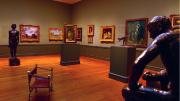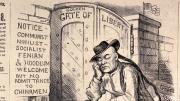Fifty years ago this spring, the Fogg Art Museum got a present from Maurice Wertheim '06, who had died the year before. He had been an investment banker in New York. He loved fly fishing and established a salmon hatchery in Quebec. He had a great interest in the theater and founded the New York Theater Guild. In 1935 he bought and became publisher of the deficit-burdened Nation, described by recent editor Victor Navasky as "a dissenting, independent, trouble-making, idea-launching journal of critical opinion." One of his daughters, Barbara (later Tuchman) '33, still in her twenties, reported for the magazine from Spain. But Wertheim got fed up with the New Deal; his brother-in-law, Secretary of the Treasury Henry Morgenthau; and the Nation; and when its then editor came out in favor of Roosevelt's court-packing plan, he sold the publication to her. That a publisher displeased with his editor did not beat her about the head, but turned the magazine over to her for a nominal sum, would be reason enough to cherish his memory.
But we have a better reason still. When he was 50, Wertheim began to collect French paintings, drawings, and sculpture made after 1870. His short-term purpose was to adorn his relatively modest house, and so he would not buy much. His deeper aim was to form a teaching collection for Harvard students of choice works by a representative group of artists from one period. He could find modernish French masterpieces still in private hands, and afford them. The gift he gave in 1951 consisted of 43 Impressionist and Post-Impressionist delights by 18 artists. Here are Monet's trains, a well-nourished bather by Renoir, a Degas dancer. There they are--van Gogh, Manet, Cézanne, Picasso, and Gauguin--permanently gracing a gallery at the Fogg, images now familiar and beloved, a veritable treasure.






